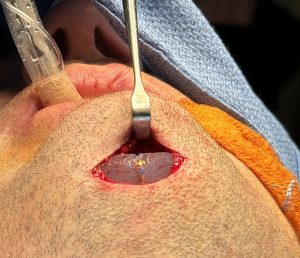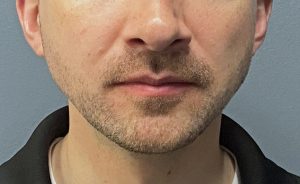Background: One of the most powerful facial implants is the custom jawline implant. It gets its substantial effects because of its large surface area coverage as well as its critical location at the junction of the face and neck. It is becoming increasingly requested by patients and used by a growing number of patients because off its profound aesthetic effects.
While some patients request the custom jawline implant as a primary facial augmentation procedure an equal number of patients have had prior aesthetic chin and jaw surgery. One of the most common precursor surgeries is the standard chin implant. This is no surprise given the history of chin implants and their familiarity with patient and surgeon alike. The deeper issue that most surgeons still view lower facial augmentation as restricted to the anterior projection of the chin only.
Some chin implant patients are satisfied with their chin implant result and merely want a more complete jaw augmentation effect. Others were never that keen on the result and are looking for an opportunity to make a major aesthetic lower facial change. But regardless of the reason the indwelling chin implant offers valuable information when planning the custom jawline implant replacement.







Key Points:
1) About 1/3 of patients that present for custom jawline implants have a prior history of chin surgery.
2) The existing chin implant provides useful dimensional information as to how to design the front end of the custom jawline implant.
3) The real power of the custom jawline implant is at its effects at the jaw angles and not connects to the chin.
Dr. Barry Eppley
World-Renowned Plastic Surgeon








